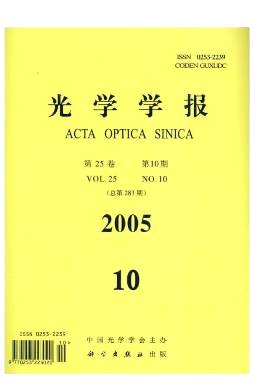光学学报, 2005, 25 (10): 1375, 网络出版: 2006-05-23
Tm3+掺杂材料激光冷却的研究
Research on Laser Cooling in Thulium-Doped Materials
光学材料 反斯托克斯荧光制冷 抽运荧光辐射循环 抽运速率 能级间距 制冷功率 热光转换效率 optical materials anti-Stokes fluorescent cooling cycle of pumping and fluorescent radiation pumping rate energy gap cooling power heat-light converting efficiency
摘要
固体材料的激光制冷又称反斯托克斯荧光制冷,是近年来刚兴起的全光学制冷技术。该技术的核心问题是制冷材料的选择。以Tm3+掺杂离子为例,从理论上分析了最小制冷能级间距与激光抽运速率的关系,研究了不同抽运速率下制冷功率与能级间距的关系以及热光转换效率与能级间距的关系,获得了最佳热光转换效率与抽运速率的关系,结果表明,最小的制冷能级间距约为4500 cm-1,能级间距在5000~6000 cm-1的宽度是比较合适的。最后探讨了Tm3+掺杂材料用于激光冷却的可行性,并讨论了制冷基体材料的合理选择问题。
Abstract
Laser cooling of solid material is also called anti-Stokes fluorescent cooling, and it is a developing all-optical cooling technology in recent years. The key question of this cooling technique is to choose suitable materials. Taking Tm3+ ion as an example, relationship between the minimum energy gap and the laser pumping rate is analyzed, and the relationship between the energy gap and the cooling power as well as the relationship between the energy gap and the heat-light converting efficiency under the different pumping rate is studied, then the relationship between the optimal heat-light converting efficiency and the pumping rate is obtained. It is found that energy gap required in the cooling cycle should be at least 4500 cm-1. It is more appropriate to choose the energy gap at 5000~6000 cm-1. Finally, the feasibility of laser cooling of thulium-doped material and the choice of host material are briefly discussed.
贾佑华, 印建平. Tm3+掺杂材料激光冷却的研究[J]. 光学学报, 2005, 25(10): 1375. 贾佑华, 印建平. Research on Laser Cooling in Thulium-Doped Materials[J]. Acta Optica Sinica, 2005, 25(10): 1375.





